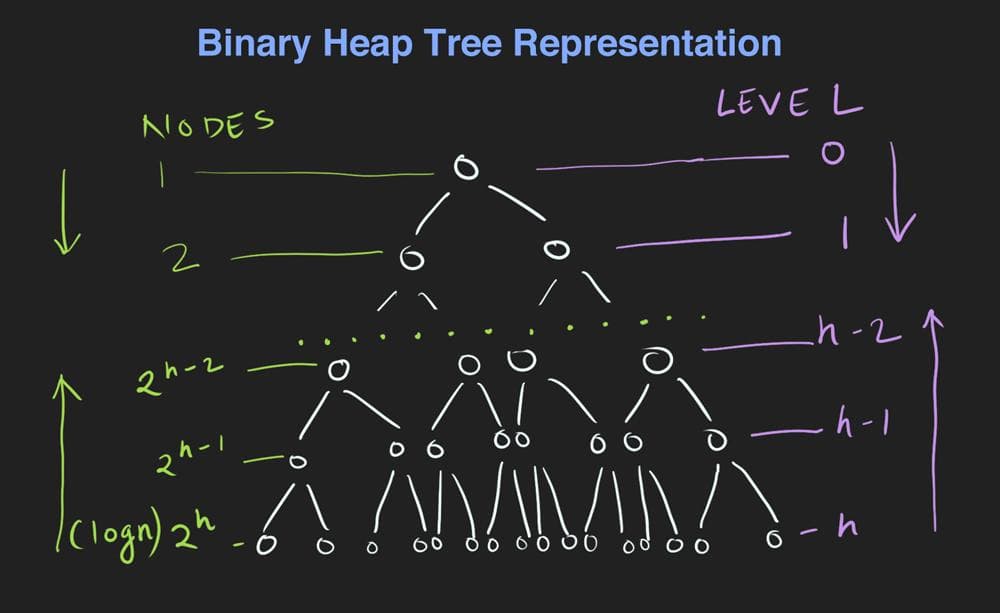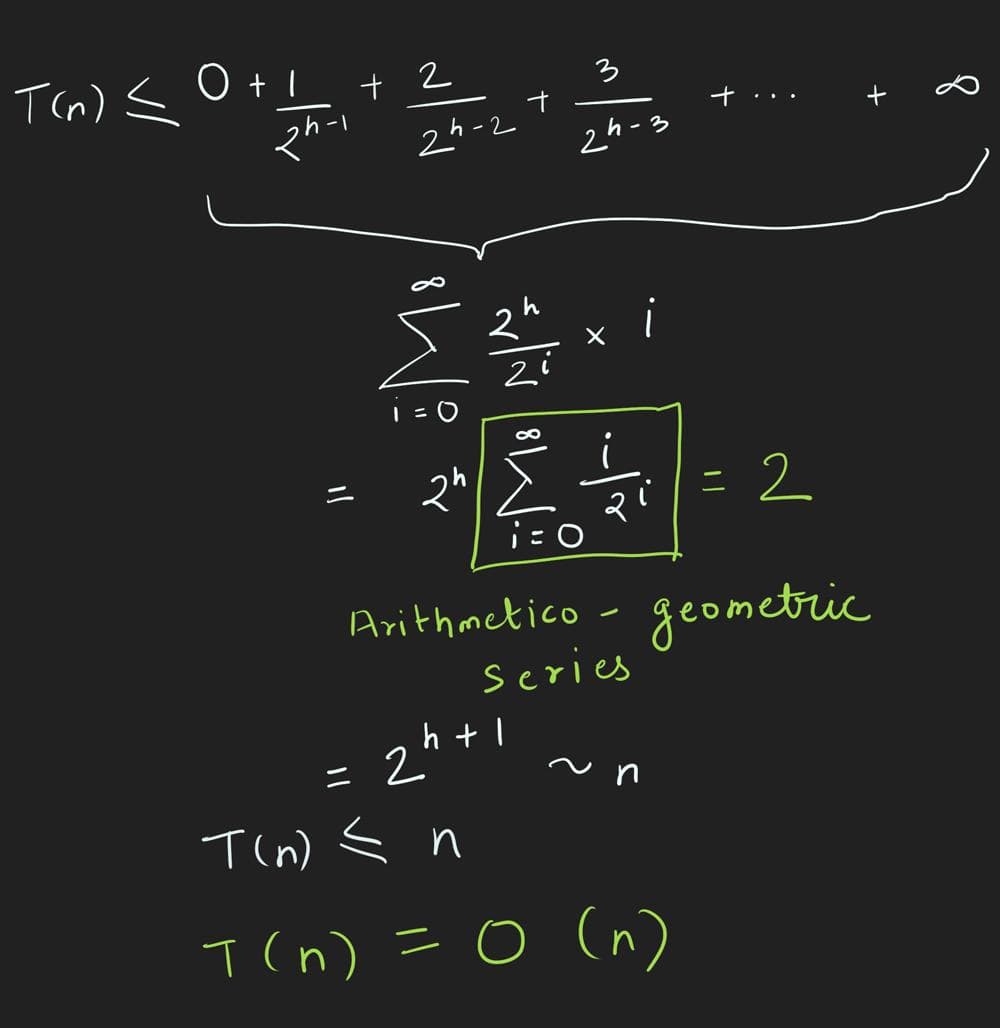
Wiki pic - Graphical example of heap sort. Source.
In-place heap sort:
Given an unsorted array,
- Build a max heap in place using
buildMaxHeapfunction. - Loop through the items of the heap.
- Instead of extracting and removing the max from the heap, swap it with last item of the heap and decrement heap size.
- "Heapify" or sink down the swapped item which is at
index 0.
/*
Time Complexity = Time to build heap + Time to heapify n items
T = O(n) + O(n * logn)
Since O(nlogn) > O(n), dropping O(n)
T = O(nlogn)
Space complexity - O(1) (Since heapify isn't recursive)
*/
function heapSort(arr) {
// O(n)
buildMaxHeap(arr)
let lastHeapIndex = arr.length - 1
// n items so T is O(n * logn)
while (lastHeapIndex > 0) {
swap(arr, 0, lastHeapIndex)
lastHeapIndex--
heapify(arr, 0, lastHeapIndex) // O(logn)
}
}
// Time Complexity of buildMaxHeap O(n). It builds the max heap in place.
function buildMaxHeap(arr) {
// start at rightmost node which is not a leaf
let i = Math.floor(arr.length / 2 - 1)
const lastIndex = arr.length - 1
while (i >= 0) {
heapify(arr, i, lastIndex)
i--
}
}
// Time Complexity of heapify - O(log n)
function heapify(heap, p, lastIndex) {
while (p < lastIndex) {
const r = 2 * p + 2,
l = r - 1,
right = heap[r],
left = heap[l]
let swapIndex = null,
max = heap[p]
if (l <= lastIndex && left > max) {
swapIndex = l
max = left
}
if (r <= lastIndex && right > max) {
swapIndex = r
}
if (swapIndex === null) break
swap(heap, p, swapIndex)
p = swapIndex
}
}
function swap(array, i, j) {
let temp = array[i]
array[i] = array[j]
array[j] = temp
}Explanation for time complexity of buildMaxHeap and why it is O(n):

/*
Time Complexity of building a max heap in place is O(n).
This is because of the structure of a binary heap.
| no. of nodes | Level | height - level | work done to sink down nodes | % of tree nodes |
| ------------ | ----- | -------------- | ---------------------------- | --------------- |
| 1 | 0 | h | 1 * h | ... |
| 2 | 1 | h - 1 | 2 * h-1 | ... |
...
| 2^h-2 | h-2 | 2 | 2^h-2 * 2 | 12.5% |
| 2^h-1 | h-1 | 1 | 2^h-1 * 1 | 25% |
| 2^h | h | 0 | 2^h * 0 | 50% |
T(n) = sum of this column
T(n) = sum of this column
T(n) = 2^h * 0 + 2^h-1 * 1 + 2^h-2 * 2 + ... + 2 * h-1 + 1 * h
|
height of tree = log(n), so we can replace the last h with log(n)
T(n) = 2^h * 0 + 2^h-1 * 1 + 2^h-2 * 2 + ... + 2 * h-1 + 1 * log(n)
Subbing out the log(n) with ∞, we can say that T(n) of n items <= T(n) of ∞ items
*/Rewriting and solving the equation, we get:

Link to wiki on arithmetico-geometric series.
If you look at the table and the percentages of number of nodes per level, you'll notice that 87.5% of nodes are in the last three levels which don't need much work and 50% of nodes don't need any work at all to sink down. So O(n) isn't really that surprising.
Heap sort with O(n) auxiliary space:
Given an unsorted array,
- Create a min heap using
MinBinaryHeapdata structure. - Loop through array items and insert each item into the min heap.
- Initialize an empty auxiliary array to hold sorted values.
- Until there are items in the heap, keep extracting min from the min heap and pushing it into the sorted array.
const { MinBinaryHeap } = require('../utils')
function heapSort(arr) {
const minHeap = new MinBinaryHeap(),
sorted = []
// n items
for (const item of arr) {
minHeap.insert(item) // O(logn)
}
// n items
while (minHeap.size > 0) {
const min = minHeap.extractMin() // O(logn)
sorted.push(min)
}
return sorted
}
/*
Time Complexity - O(nlogn) (inserting n items into heap) + O(nlogn) (extracting n items from heap)
T = O(nlogn)
Space complexity - O(n) auxillary space (for sorted array and heap)
*/
/* ---------------------------------------------------------------------------- */
// Tests
const testCases = [
[
[5, 6, 1, 0, 6, 2],
[0, 1, 2, 5, 6, 6],
],
[
[-1, 6, 2, 100, 0, -11],
[-11, -1, 0, 2, 6, 100],
],
[
[7, 6, 5, 4, 3, 2, 1, 0],
[0, 1, 2, 3, 4, 5, 6, 7],
],
]
for (const test of testCases) {
const sorted = heapSort(test[0])
console.log(sorted)
console.log(JSON.stringify(sorted) === JSON.stringify(test[1]))
}